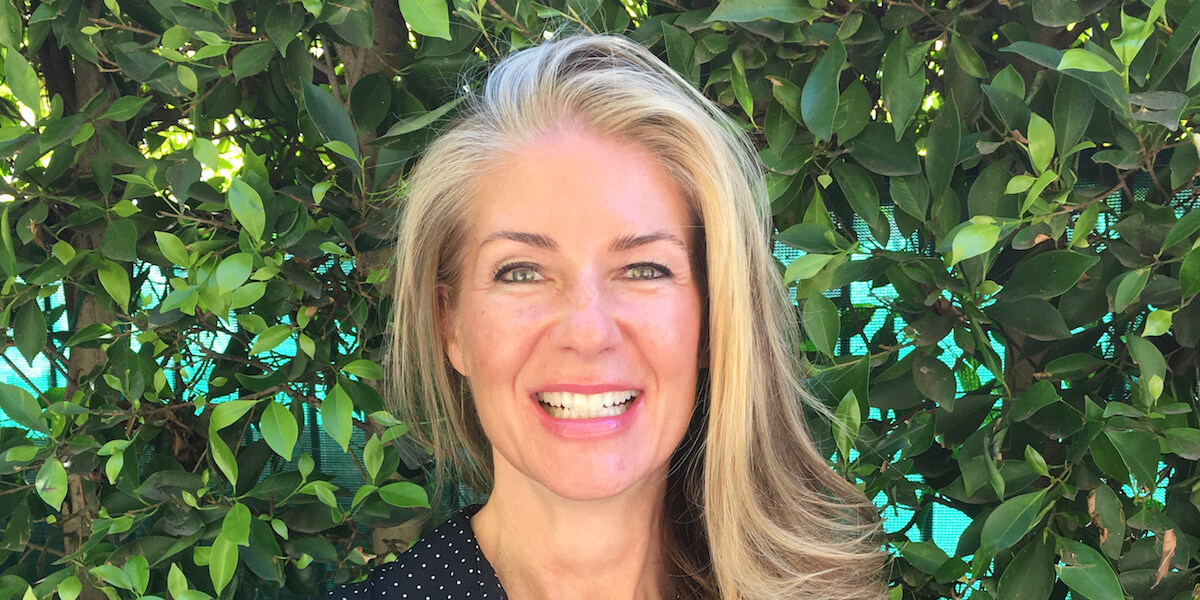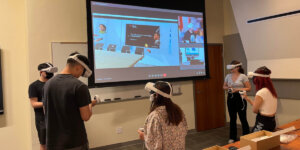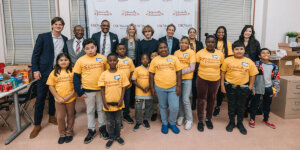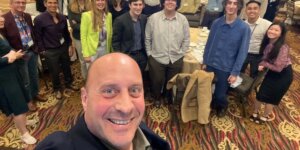
Elisabeth Arnold Weiss, a senior lecturer in the Engineering Writing Program, helped establish a collaboration between her students and a local elementary school, ACES, to bring engineering solutions to several school challenges. (Photo/Courtesy Elisabeth Arnold Weiss)
Andrew Prajogi, B.S. EE ’17, never much cared for English classes. The 22-year-old Northrop Grumman engineer, now studying for his master’s degree in cybersecurity at USC Viterbi, says he found them dull and “too divorced from reality.”
But Writing 340 for Engineers was different. Taught by senior lecturer Elisabeth Arnold Weiss, this advanced writing class requires students to produce a group report that leverages engineering for social good, offering an invaluable real-world experience.
In spring 2017, Prajogi’s four-member team developed a study calling for the creation of an after-school robotics program at the Accelerated Charter Elementary School (ACES) in South Los Angeles. The report, prepared with input from ACES teachers and students, envisioned a three-year curriculum for fourth, fifth and sixth graders that would teach coding and robotics in a fun way — and spark interest in STEM and STEM-related careers among the school’s mostly low-income, Latino students.
So compelling were the team’s recommendations that ACES incorporated many of them into its newly minted robotics program.
“The best part of this project was that it was hands-on,” Prajogi said. “I hate writing classes, but Professor Weiss’s was more inspiring and made me work harder. Why? Because the idea of making a difference was staggering.”
Weiss decided to partner with ACES in 2010 because she thought her efforts could make a big difference there. The school’s impressive academic record notwithstanding, it was “struggling to acquire technological resources, facilities, space utilization, traffic safety, integration with the community,” she said. “Because all of these areas could be improved through engineering, I felt the potential for our impact was great.”
Since then, her Writing 340 students have come up with creative ways to improve academics, sustainability and even school spirit. They devised a pickup and drop-off system that increased traffic safety and prompted the city to add signage and a crosswalk at the school’s former campus. A report on sustainability inspired the creation of an edible garden that doubles as a science lab at its new $35 million facility. Even ACES’ eagle mascot and blue-and-gold color scheme were first suggested in a 340 report.
“These projects provide our students with an educational experience that is innovative, interesting and unique,” Weiss said. “Aside from the clear benefit of honing their communication skills and applying engineering problem solving to a real-life situation, the experience highlights the diversity of our own students and increases their ability to collaborate with one another across a wide spectrum of perspectives.”
In the nearly 20-year history of the writing course for engineers, USC Viterbi students have worked with more than 100 nonprofits, ranging from local schools to programs dedicated to helping for HIV/AIDS orphans in Mozambique, according to Steve Bucher, director of the Engineering Writing Program. Such hands-on experiences, he said, are unique in an engineering writing program and consistent with USC Viterbi’s emphasis on community outreach. What’s more, national accreditors have singled out the writing program for excellence.
“It’s one thing to write a report and receive a grade,” Bucher said. “It’s another to have the report go beyond the classroom and have an NGO or nonprofit take it seriously and implement some or all of it.”
Weiss meets periodically with ACES principal Susan Raudry to discuss current needs, then groups those ideas into broad categories, such as safety and sustainability, and encourages her students to come up with specific projects within each category. Weiss and her students share the final reports with school leaders, who decide whether and how to act on them.
In part because of Weiss and her students’ efforts, ACES is now included in USC’s Science Outreach program and the Joint Education Project’s computer science tutoring pool.
Raudry appreciates all that the USC students have done over the years.
“Their ideas are very innovative. They’re problem solvers and help us come up with better ideas on how to use our resources,” Raudry said. “Sometimes when you’re in the trenches and working day to day, it’s hard to take a step back.”
The collaboration has done more than just help improve the elementary school, Raudry added. With USC Viterbi students coming to the school for research and ACES students attending project presentations at Troy, “this gets our kids excited about going to college, especially USC. It gives them exposure and shows them that higher education is attainable,” she said.
Published on March 6th, 2018
Last updated on August 30th, 2019










